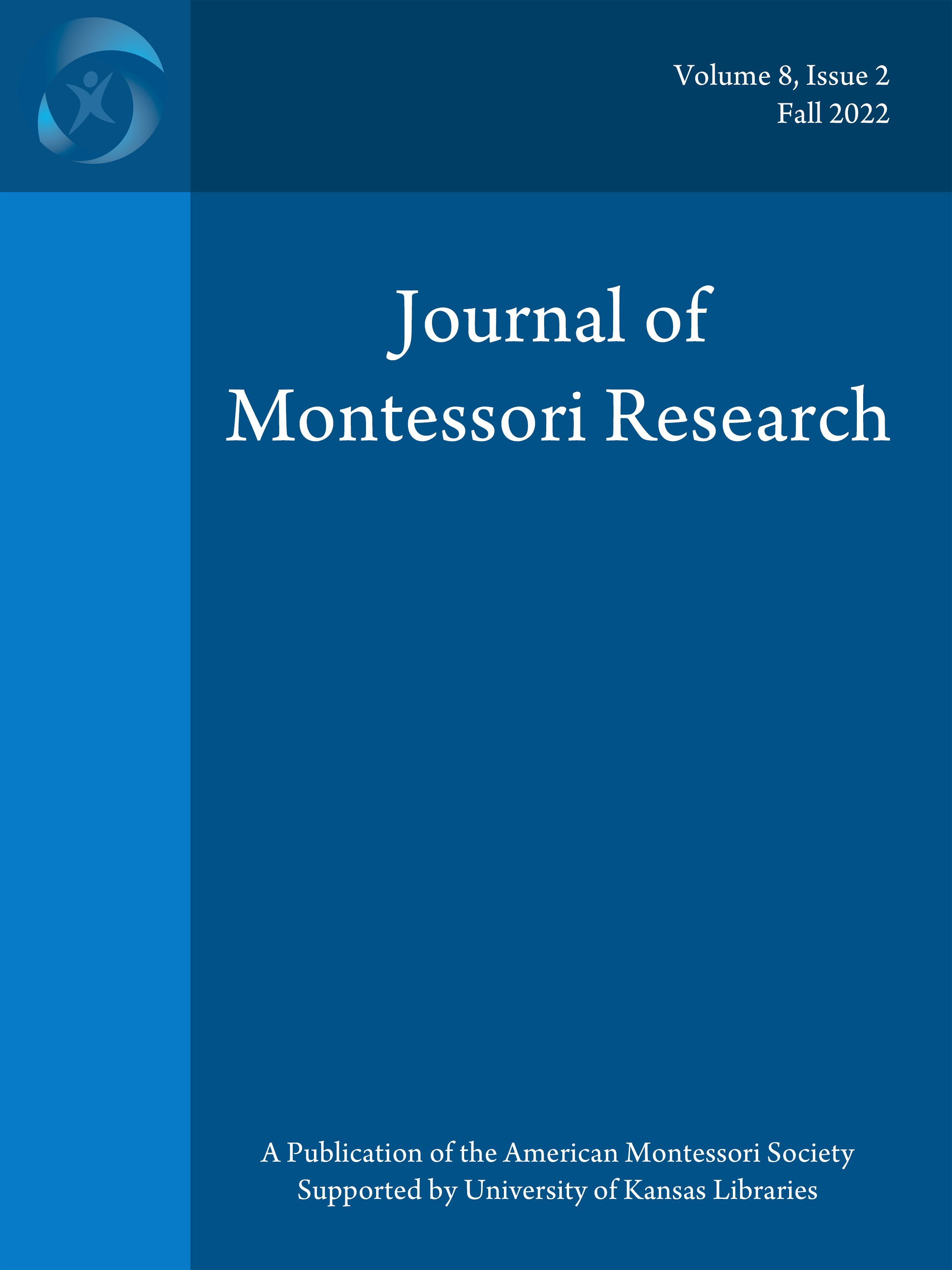BOOK REVIEW Visual Thinking Strategies in Montessori Environments
DOI:
https://doi.org/10.17161/jomr.v8i2.18640Keywords:
Visual Thinking StrategiesAbstract
Using almost 30 years of research, the National Center for Montessori in the Public Sector (NCMPS) and Philip Yenawine present the case for visual thinking strategies (VTS) as an opportunity to apply these strategies in the Montessori learning environment by centering engagement with art. The overall goal of VTS is to provide an accessible transformative learning experience through an open-ended discussion of visual art that increases a student’s literacy, language, and critical thinking skills.
References
Bickmore, S., Binford, P., & Rumohr-Voskuil, G. (2017). Crossing Selma’s bridge: Integrating Visual Discovery strategy and young adult literature to promote dialogue and understanding. Middle Grades Review, 3(3). https://scholarworks.uvm.edu/mgreview/vol3/iss3/7
Hayes, A., Owens, S., & Simpson. D. J. (2010). Bring learning alive!: Methods to transform middle and high school social studies instruction. Palo Alto, CA: Teachers' Curriculum Institute. Montessori, M. (2017). Formation of man. Montessori-Pierson.
Roswell, J., Mclean, C., & Hamilton, M. (2012). Visual literacy as a classroom approach. Journal of Adolescent & Adult Literacy, 5(55), 444–447. https://www.jstor.org/stable/41331470
Suh, Y. (2013). Past looking: Using arts as historical evidence in teaching history. Social Studies Research and Practice, 8(1), 135–159. http://dx.doi.org/10.1108/SSRP-01-2013-B0010
Downloads
Published
Issue
Section
License
Copyright (c) 2022 John Broome

This work is licensed under a Creative Commons Attribution-NonCommercial 4.0 International License.


